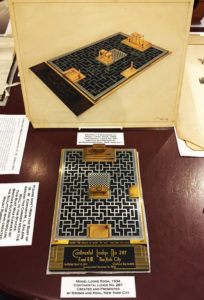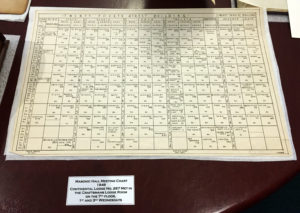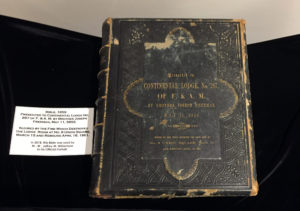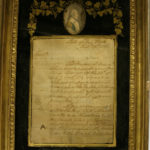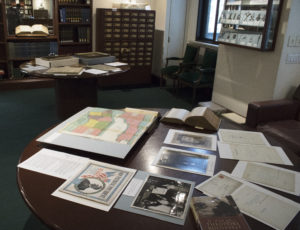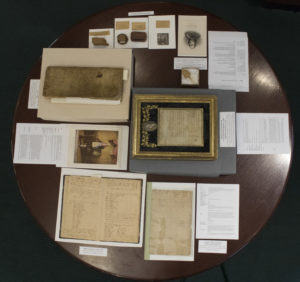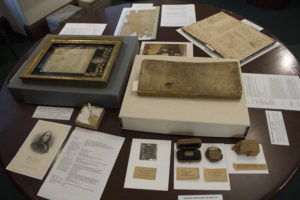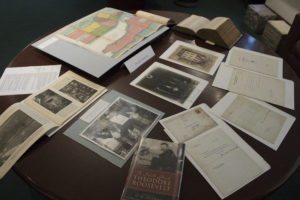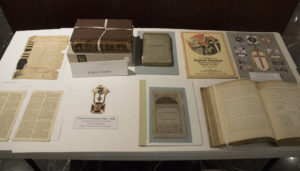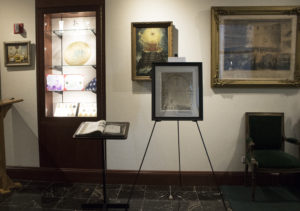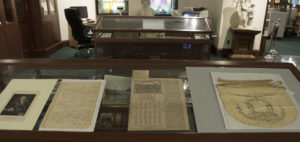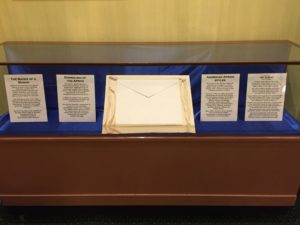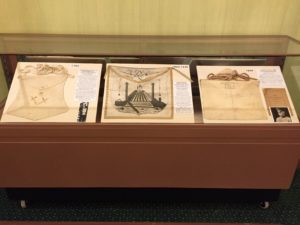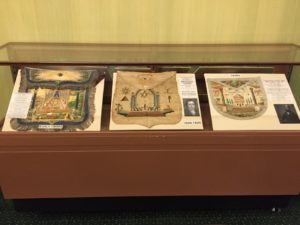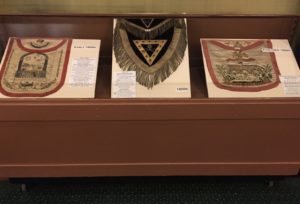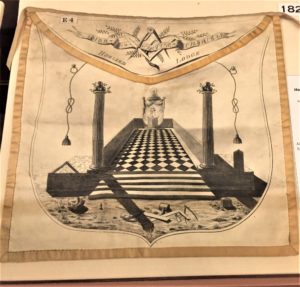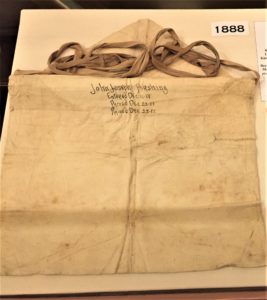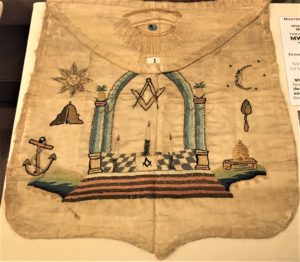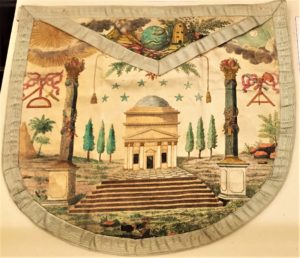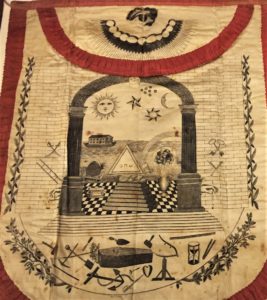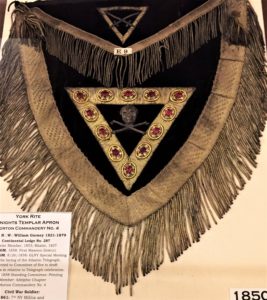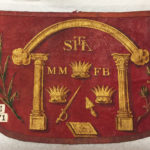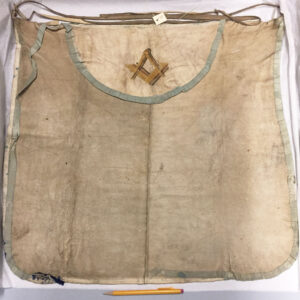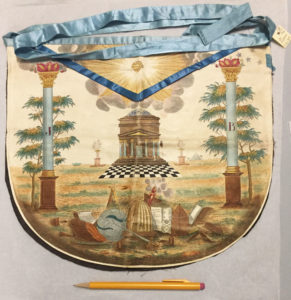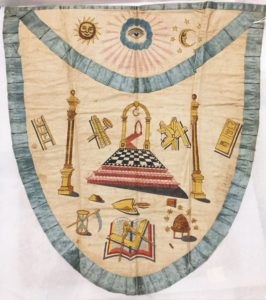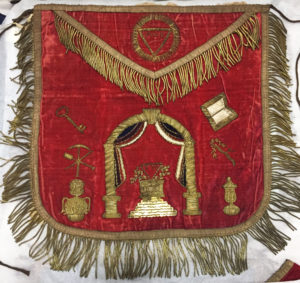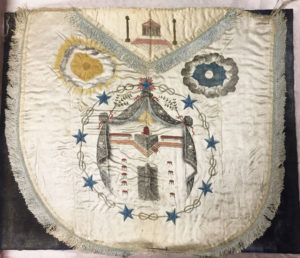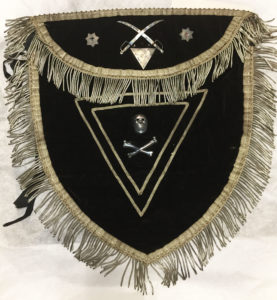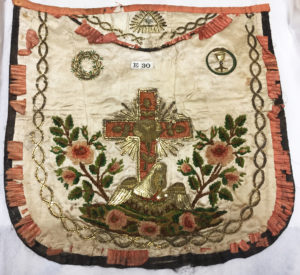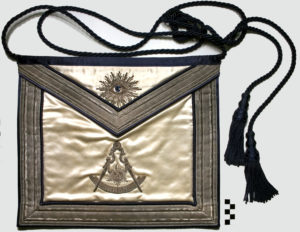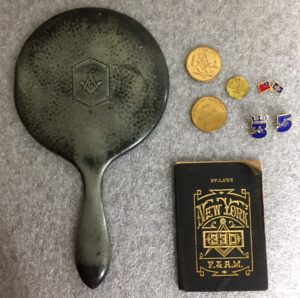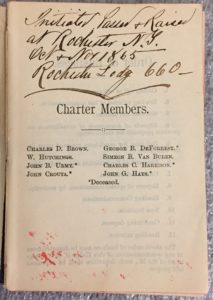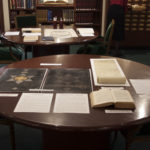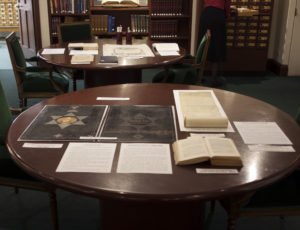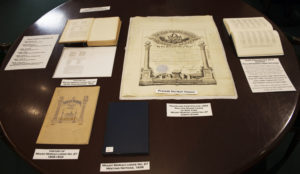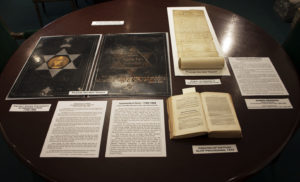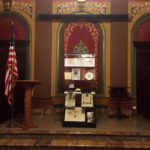
By Catherine M. Walter, Curator and Ratirat Osiri, Assistant Curator
On November 14, 2018, The Square Club of the Fourth Masonic District of Manhattan, Inc. held a General Meeting Festive Board in the Ionic Room at Masonic Hall in New York City. At the meeting, the Square Club hosted RW Demetrios G. Melis, Secretary of the Library’s Board of Trustees, who presented a brief lecture on the history of the Fourth Manhattan District and its Square Club. The Square Club can be considered one of the oldest District Associations in the Grand Lodge of New York, being a direct successor to the Square Club of the Seventh Masonic District of Manhattan, which existed as early as the 1890s.
The Fourth Masonic District of Manhattan was originally formed from 22 Lodges of the Sixth and Seventh Districts in the 1918 state-wide reorganization of the Districts of the Grand Lodge of New York. Those 22 Lodges included (to this day) Kane Lodge No. 454, the “Explorers’ Lodge,” and St. Cecile Lodge No. 568, the state’s first daylight “Lodge of the Arts.” This Lodge has special Dispensation to meet during the day, due to its membership which was largely formed of performers who could not meet at night.
Through the work of Ms. Catherine M. Walter, Curator, and Ms. Ratirat Osiri, Assistant Curator, with the assistance of Mr. Joseph Patzner, Librarian, the Livingston Masonic Library and Museum was pleased to present a Temporary Exhibit highlighting some of the fascinating artifacts held in the collections which came from Lodges in the Fourth Manhattan District. The attendees stated that they greatly appreciated the Special Exhibit and extended their grateful thanks to the Library staff for their work illuminating the history of their Lodges and Districts.
-
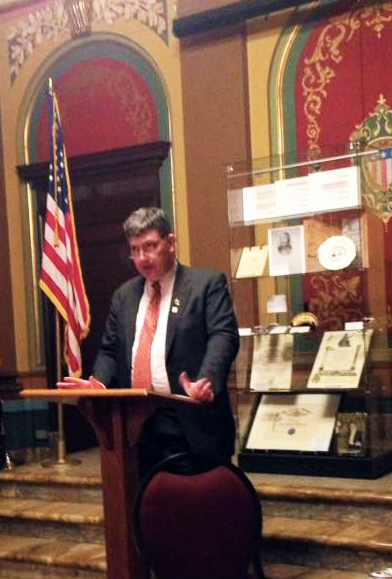
RW Demetrios Melis, Secretary of the Livingston Library Trustees
Image Courtesy RW Melis. -

Image Courtesy RW Melis.
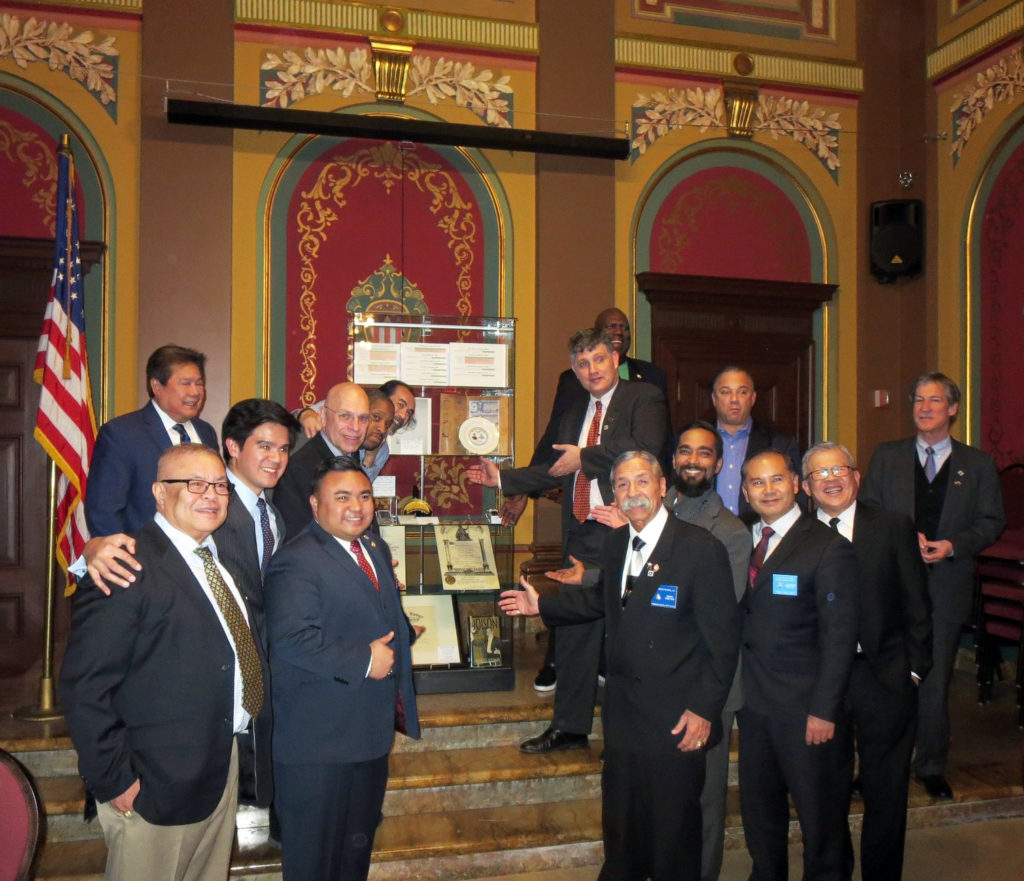
Image Courtesy RW Melis.
The Lodges of the Fourth Manhattan District, their organizational histories and the displayed artifacts are highlighted below.
Heritage Lodge No. 371 was formed in 1996 with the merger of Sagamore Lodge No. 371 and Corinthian Architect Lodge No. 488. It the existent Lodge after the previous mergers of Greenwich Lodge No. 467 and Sagamore-Naphthali Lodge No. 371 in 1971, and Corinthian Lodge No. 488 and Architect Lodge No. 519 in 1967. On display in the Exhibit was the below 1905 Member Pendant from the 50th Anniversary of Sagamore Lodge No. 371 [J6inv-654]. Sagamore Lodge No. 371 was warranted on July 3, 1855).
-
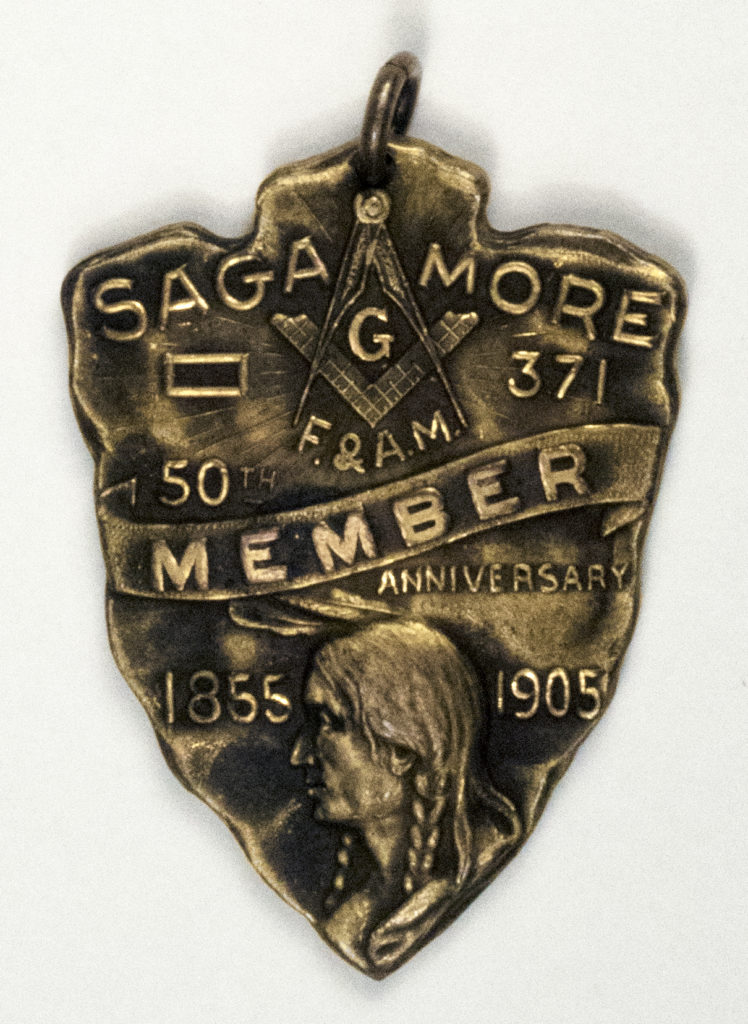
Image by Ratirat Osiri
Compact Lodge No. 402 was formed in 1979 with the merger of Crescent Lodge No. 402 and Monitor Mosaic Lodge No. 418, and is the existent Lodge after the merger of Mosaic Lodge No. 418 and Monitor Lodge NO. 528 in 1971. On display in the Exhibit was the below 1903 Ashtray commemorating Crescent Lodge No. 402’s One Thousandth Communication [I38]. Crescent Lodge No. 402 was warranted on July 3, 1856.
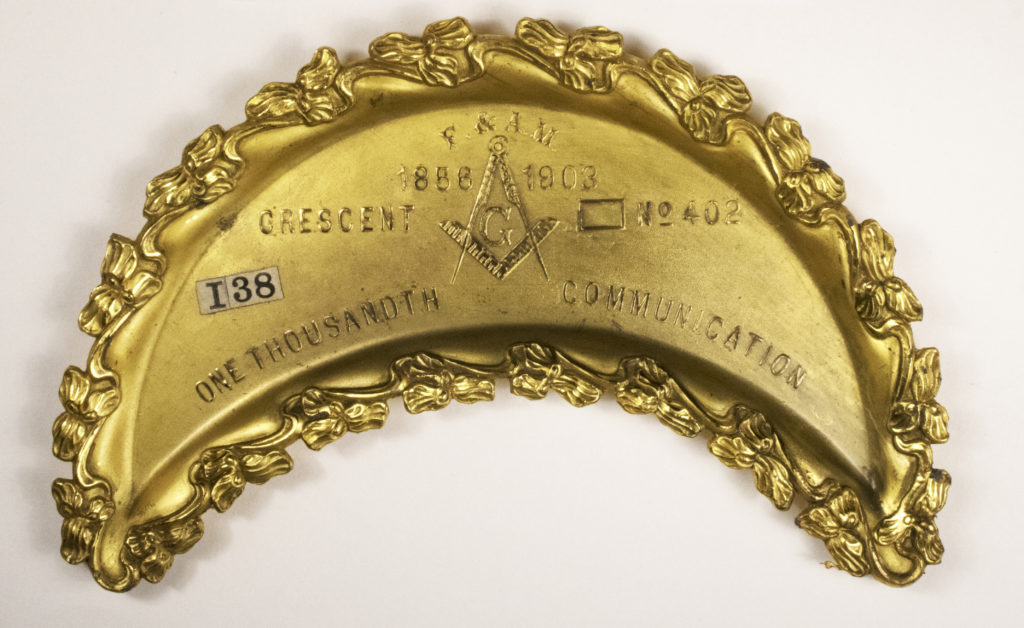
Franklin Lodge No. 447 was warranted on June 25, 1858. On display in the Exhibit was the below Past Master’s Jewel, which is engraved with the following: “Presented by Franklin Lodge No. 447 F & AM to W.B Barnett Woolf as a token of their Appreciation of the Manner he presided Over them during 1864, 1865 & 1867. Re-presented by Franklin Lodge No. 447 to Wor. Bro. Isaac J. Woolf, on his installation as Master Dec. 17th, 1917.” Franklin Lodge No. 447 was warranted on June 25, 1858.
-
Not on display, but part of the Library’s Artifact collection is this miniature gold and ivory trowel, used by MW Benjamin Franklin in his Lodge, and presented to Franklin Lodge No. 447 by MW Nathaniel F. Waring, who served in 1857 as Grand Master of the “Phillips Grand Lodge,” one of the four schism-Grand Lodges of the State of New York.
Those Grand Officers of the Phillips Grand Lodge were accorded legal Past Grand Officer status upon the healing of the two Grand Lodges on June 7, 1858.
Image by Catherine M. Walter
-
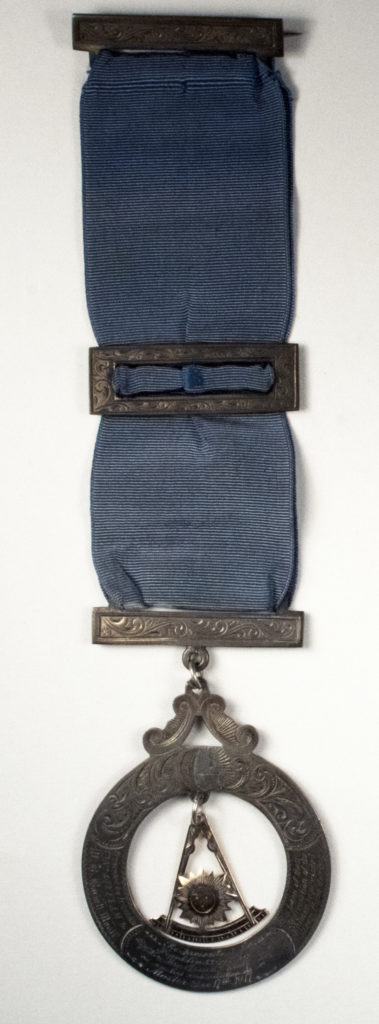
Image by Ratirat Osiri
-
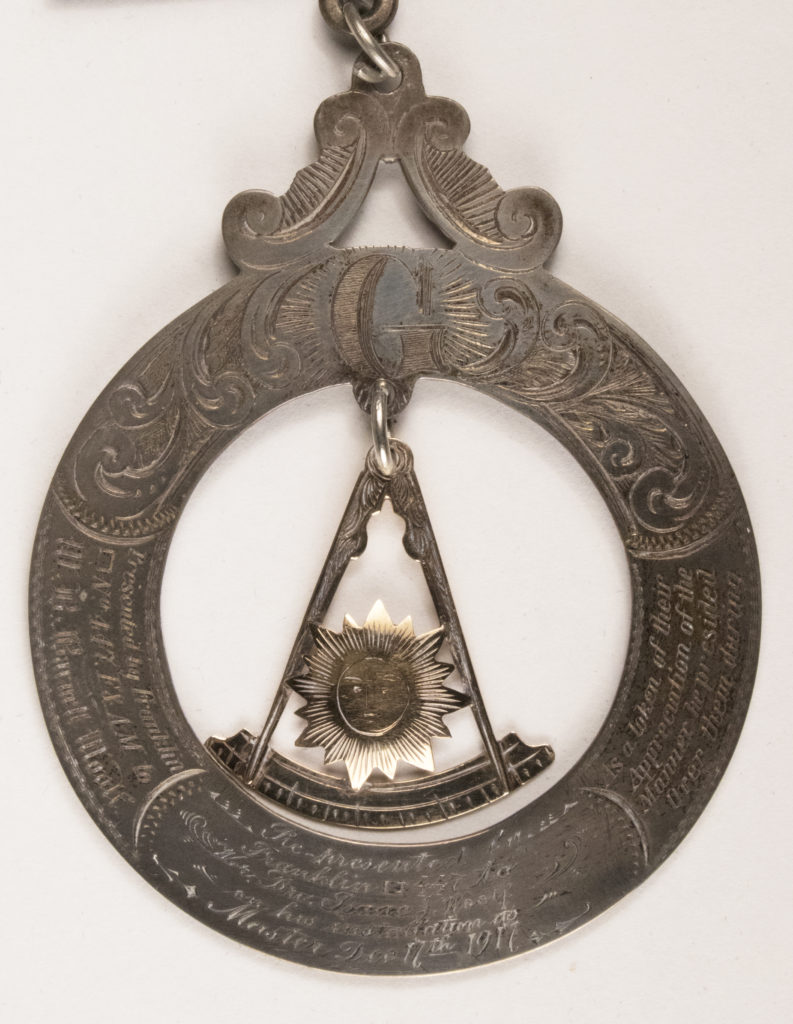
Image by Ratirat Osiri
The existent Manahatta Lodge No. 449 was formed after a 1975 merger of Hiram Lodge No. 449 and Manahatta Lodge No. 489. On display in the Exhibit was the below 1900 lapel pin from Hiram Lodge No. 449, a Lodge with a quite complicated history. Its initial warrant was dated March 10, 1783, having been formed by members of No. 213 Army Lodge under the English registry. It became No. 7 in the renumbering of June 3, 1789, and then became No. 10 in the renumbering of June 4, 1819. On December 1, 1830, it’s number changed to No. 9 in the Proceedings.
On December 3, 1834, its warrant was suspended, and soon thereafter, surrendered. There was an attempted revival in 1852 by the Phillips Grand Lodge, which failed, and the warrant was again surrendered. A Petition to revive the warrant was made on February 6, 1858, and the warrant was revived on February 9, 1859 by the Grand Master of the Phillips Grand Lodge, in which it became No. 148. At the union of the Phillips Grand Lodge and the regular Grand Lodge of New York on August 4, 1858, it received the number 449. More research would need to be done to discover why the lapel pin marks 1792 as an important date for the Lodge.
-
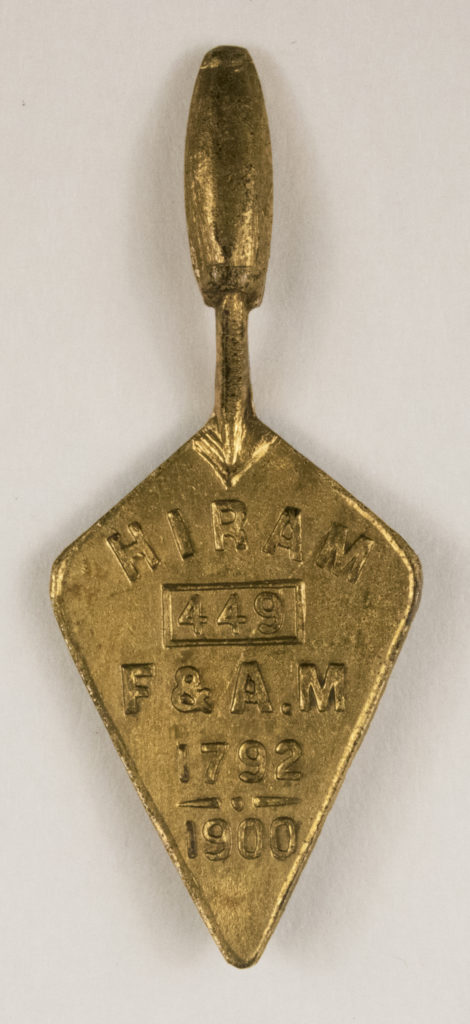
Image by Ratirat Osiri
Kane Lodge No. 454 was warranted on June 9, 1854. On display in the Exhibit was a 1900 Program for a Dinner to Kane Lodge No. 55, New Jersey, by Kane Lodge No. 454, NY. Included in the Program was a signed engraving by Jacques Reich of Elisha Kent Kane. Kane Lodge No. 454 maintains their own Museum at the Grand Lodge of New York which highlights their explorer members who traveled to and discovered the North Pole.
-
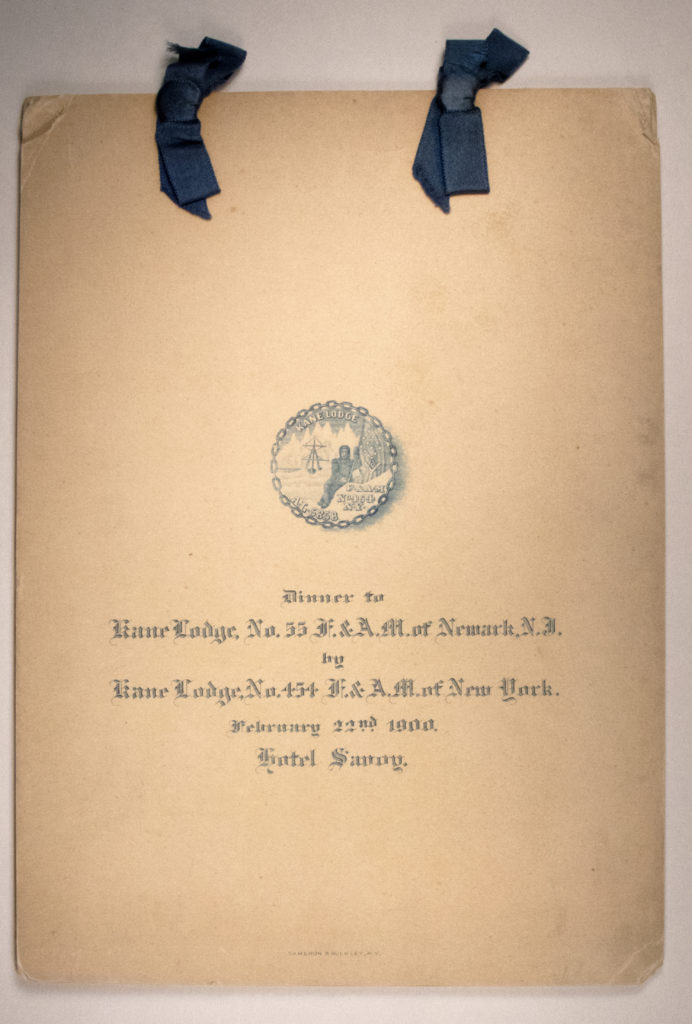
Image by Ratirat Osiri -
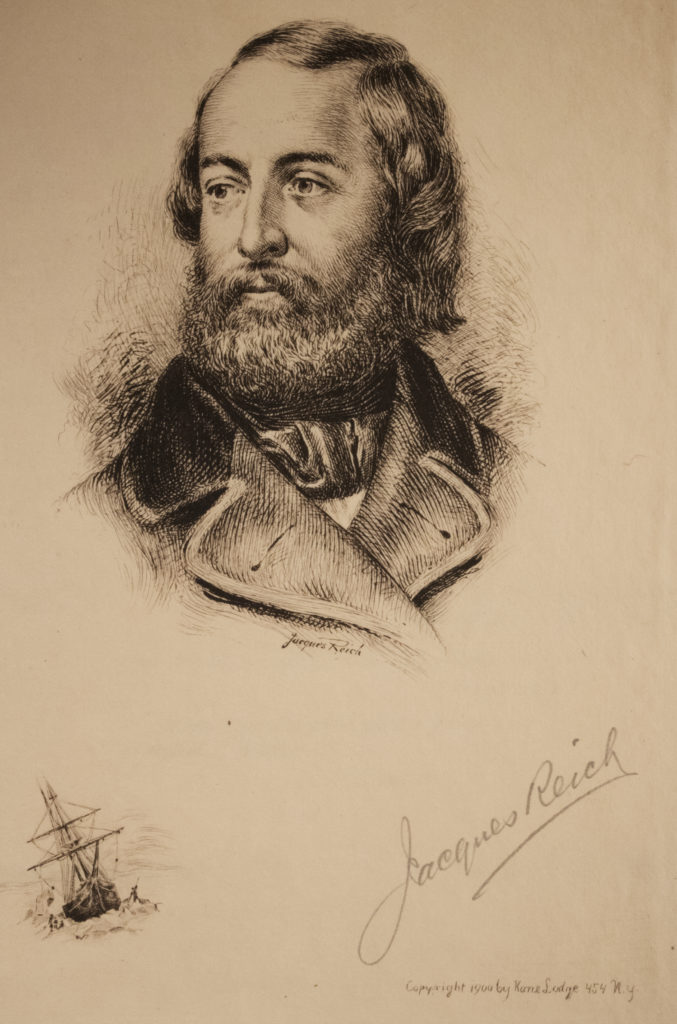
Image by Ratirat Osiri

Image by Catherine M. Walter
Columbian Lodge No. 484 was warranted on June 15, 1860. On display in the Exhibit was the below Medal commemorating the 50th Anniversary of the Lodge in 1910.
-
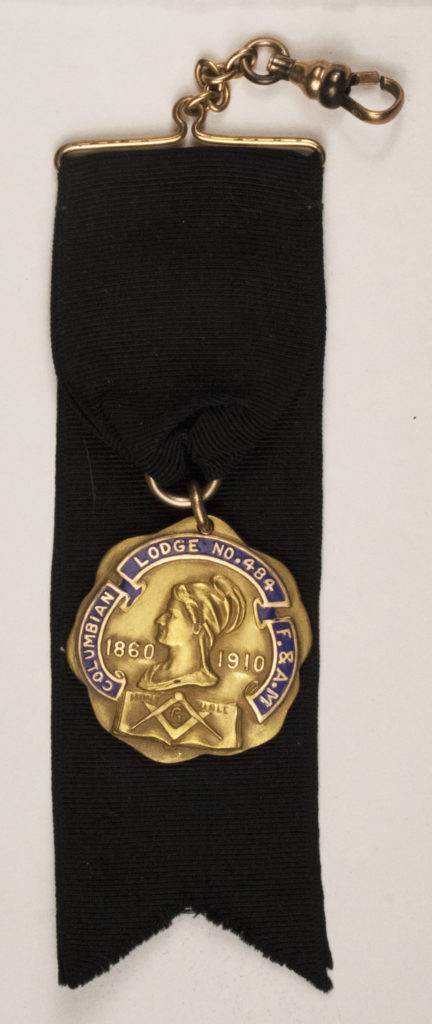
Image by Ratirat Osiri
Pyramid Lodge No. 490 was warranted on June 3, 1856 by the revived St. John’s Grand Lodge, and was granted a new warrant from the regular Grand Lodge on June 8, 1860. On display in the Exhibit was the below medal from their 50th Anniversary in 1910.
-

Image by Ratirat Osiri
-
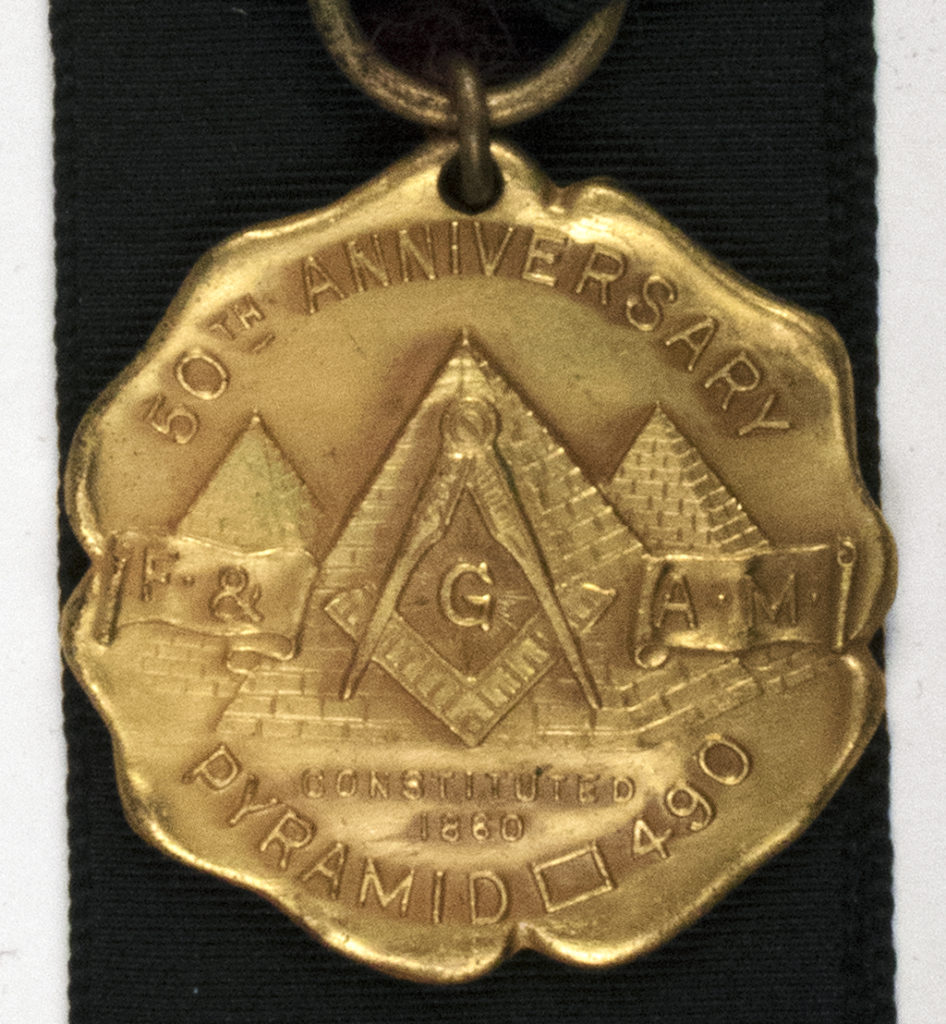
Image by Ratirat Osiri
Park Lodge No. 516 was warranted on June 5, 1862. The first communication of Park Lodge was held at Washington
Hall, 683 Eighth Avenue, on Wednesday evening, July 11, A.L.
5860, under a Dispensation granted by MW John W. Simons, Grand Master.
An early petitioner to Park Lodge was Peter Hart, who distinguished himself as one of the first heroes of the Civil War. Of this Brother, “Leslie’s History of New York” commented: “With Major Anderson at Fort Sumter was Peter Hart, a soldier who had served with him in the Mexican campaigns. Hart was a native New Yorker and had once been a sergeant on the New York Police force. Nine times during the bombardment of Fort Sumter, the Stars and Stripes were pierced by shots from Confederate
batteries. At last a ball struck the staff and down came Old Glory to the dust. Thereupon, Peter Hart climbed to the top and nailed the flag to it while shot and shell were pouring all around him in a hissing shower. It remained in its proud position for two days until the surrender on April 14, 1861. It is worthy to note among the historic memories of the times a New Yorker saved the Stars and Stripes from falling in the first historic battle of the Great Civil War.”
A postcard in the collection which references the Lodge was not placed on display in the Exhibit, but is featured below.

Image by Catherine M. Walter
Gramercy Lodge No. 537 was warranted on June 17, 1863. A large coaster which was not placed on display for the Exhibit is featured below.
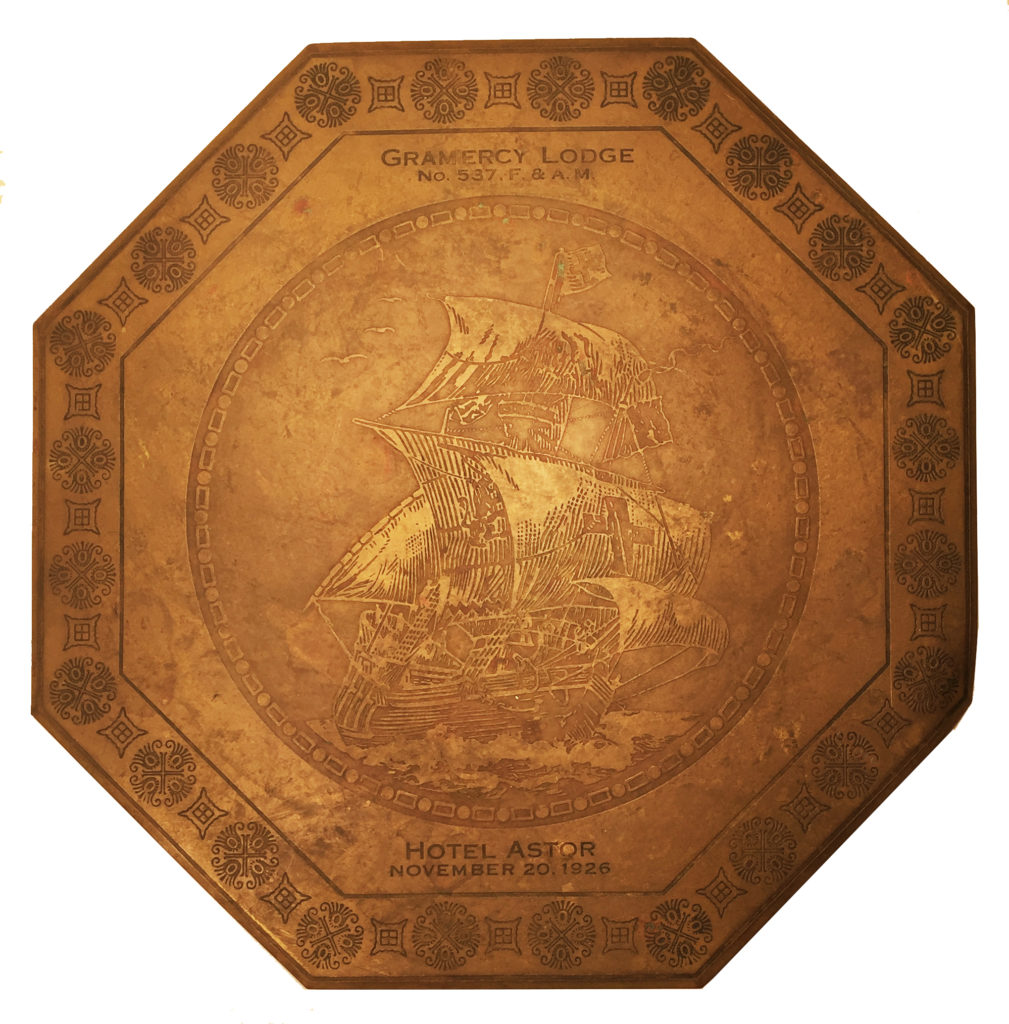
Image by Catherine M. Walter
On February 20th of that year, 1863, Putnam Lodge, No. 338 sponsored
the application of W..George K. Chase and twenty-three other Masons to form a Lodge they named Gramercy (which to the American Indians means “Many Thanks”). Of these petitioners, twenty-one were from York
Lodge, No. 197; one from Oscar Coles Lodge, No. 241; one from Tecumseh Lodge, No. 487 and one from Hiram Lodge, No. 1, of New Haven Conn. They came from diverse walks of life: broker, tailor, lawyer, baker, plumber, brush maker, grocer, hardware and ointment merchants, to name a few…
At the outset, the Lodge developed a close fraternal association with Sagamore Lodge, which presented Gramercy with a trowel.
St. Cecile Lodge No. 568 was warranted on June 28, 1865. It was the first Lodge in New York State to be granted Dispensation to meet during the day, as most of the members were entertainers who worked at night on Broadway. On display in the Exhibit was the below Certificate for Brother Al Jolson. Also on display from the Biography Section of the Library’s Book Collection was the book, Jolson: The Legend Comes to Life, by Herbert G. Goldman [Call Number in the Library: 921 J68g].
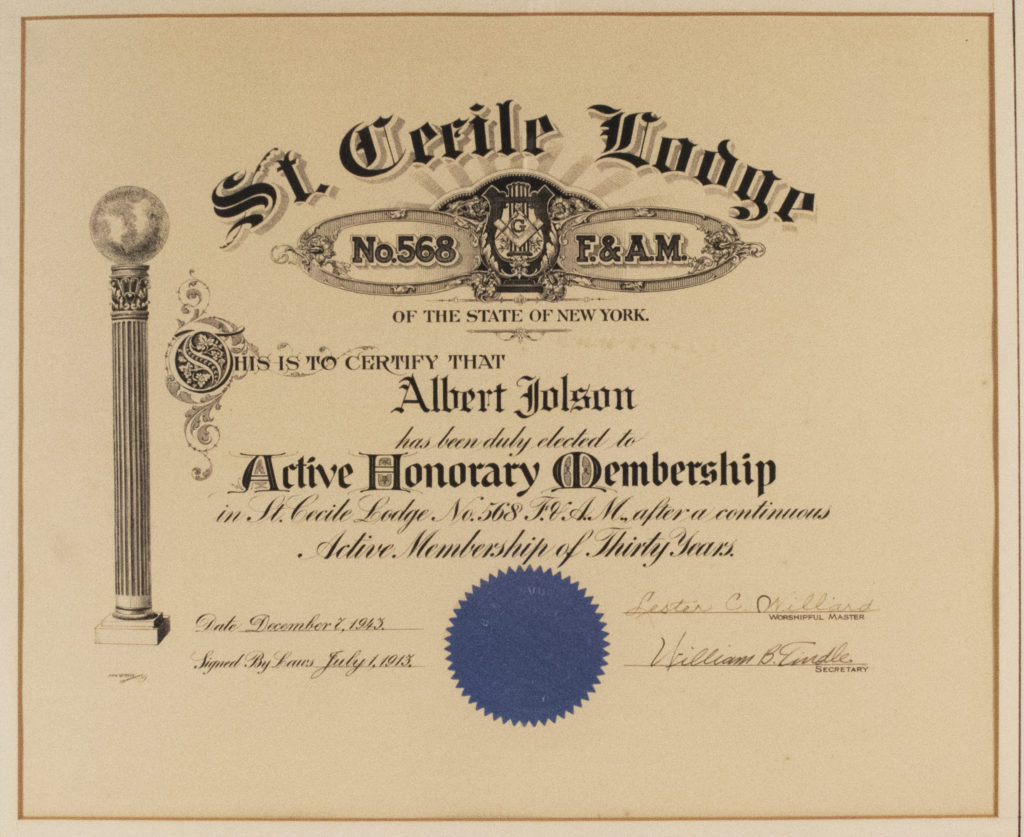
He was Raised on July 1, 1913 into St. Cecile Lodge No. 563, and thirty years later, received the above Active Honorary Membership Certificate.
Image by Ratirat Osiri
Publicity Lodge No. 1000 was warranted on May 3, 1922. Today, it is formed by the consolidation of Harlem Lodge No. 457 and Americus Lodge No. 535 which merged to become Liberty Lodge No. 457 in 1986, and by the merger of Liberty Lodge No. 457 and Publicity Lodge No. 1000 who merged in 1999 to become Publicity Lodge No. 1000. On display in the exhibit was the below certificate issued to Brother Hiram B. LeQuatte in 1962, commemorating his 50 year anniversary of becoming a Freemason. This certificate was donated in 2016 by David Wendt in Honor of Hiram B. LeQuatte.
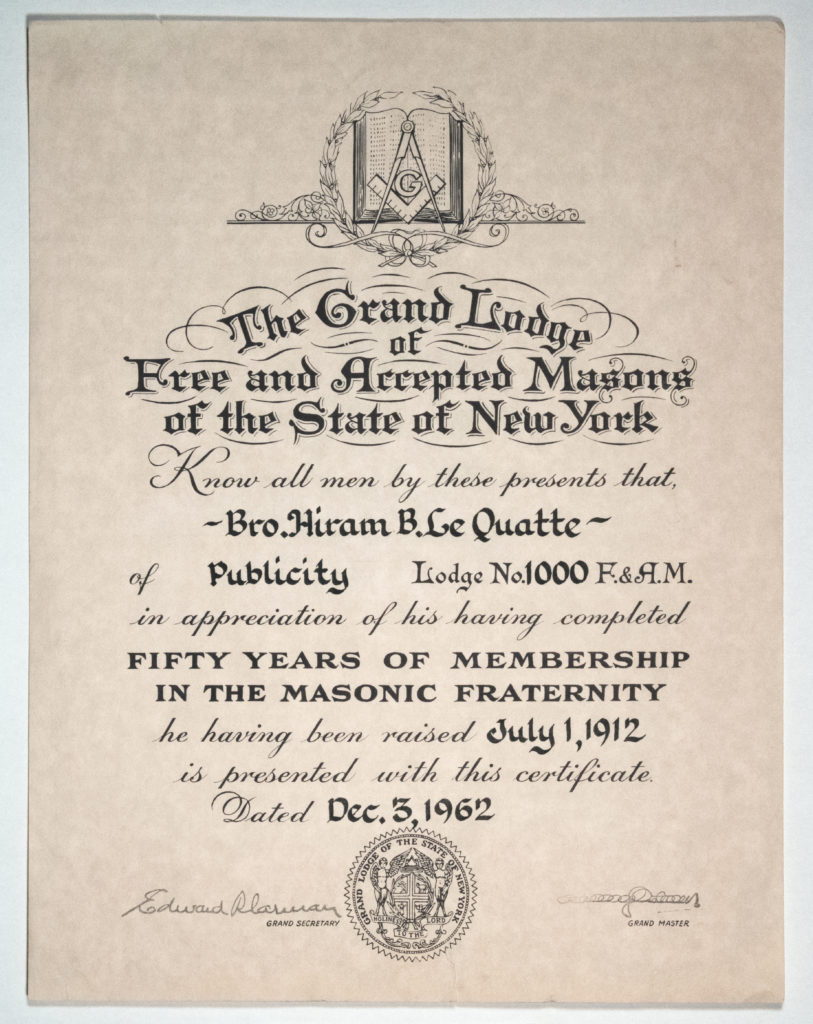
Britannia Lodge No. 1166 was warranted on May 6, 1964. On display in the exhibit was the below Certificate of attendance during the Lodge’s 25th Anniversary celebration. It was presented to MW Wendell K. Walker, Honorary Past Grand Master (awarded in 1979) and Past Grand Secretary from 1963-1990, serving for 27 years during the terms of 15 Grand Masters. He passed away in 1991, during MW Richard P. Thomas’ term. MW Walker was an avid supporter of the Livingston Masonic Library.
-
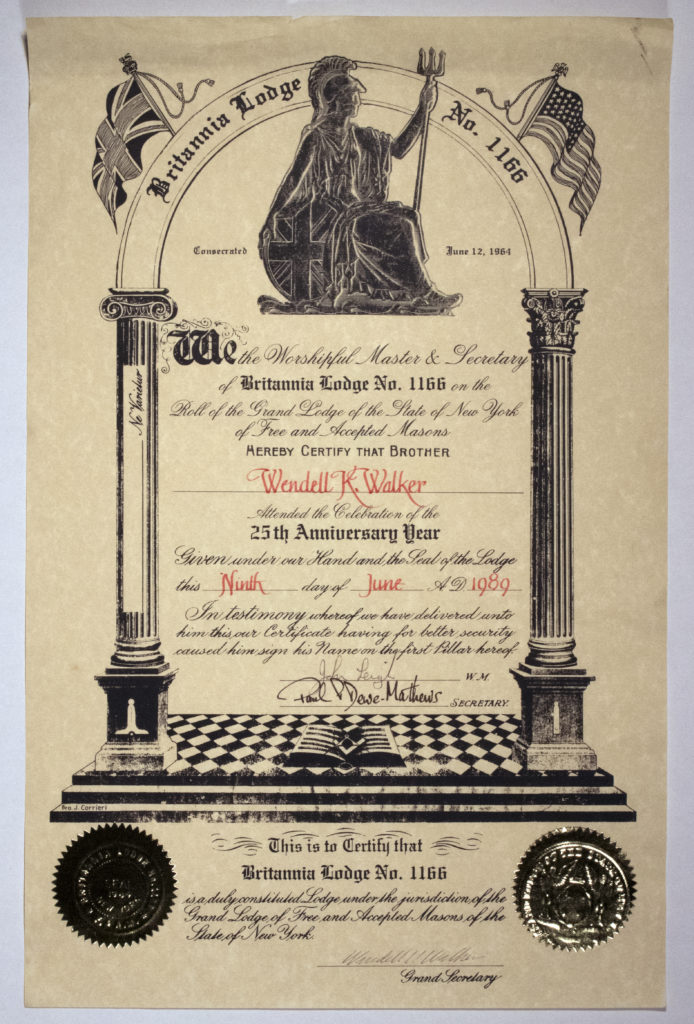
Image by Ratirat Osiri
Jose Rizal Lodge No. 1122 was warranted on May 16th, 1984. On display in the exhibit was the below plate, celebrating the Lodge’s 25th Anniversary in 2010 and issued during the term of W.. Arvin P. Repil. a Brother in good standing for the past 37 years.
-
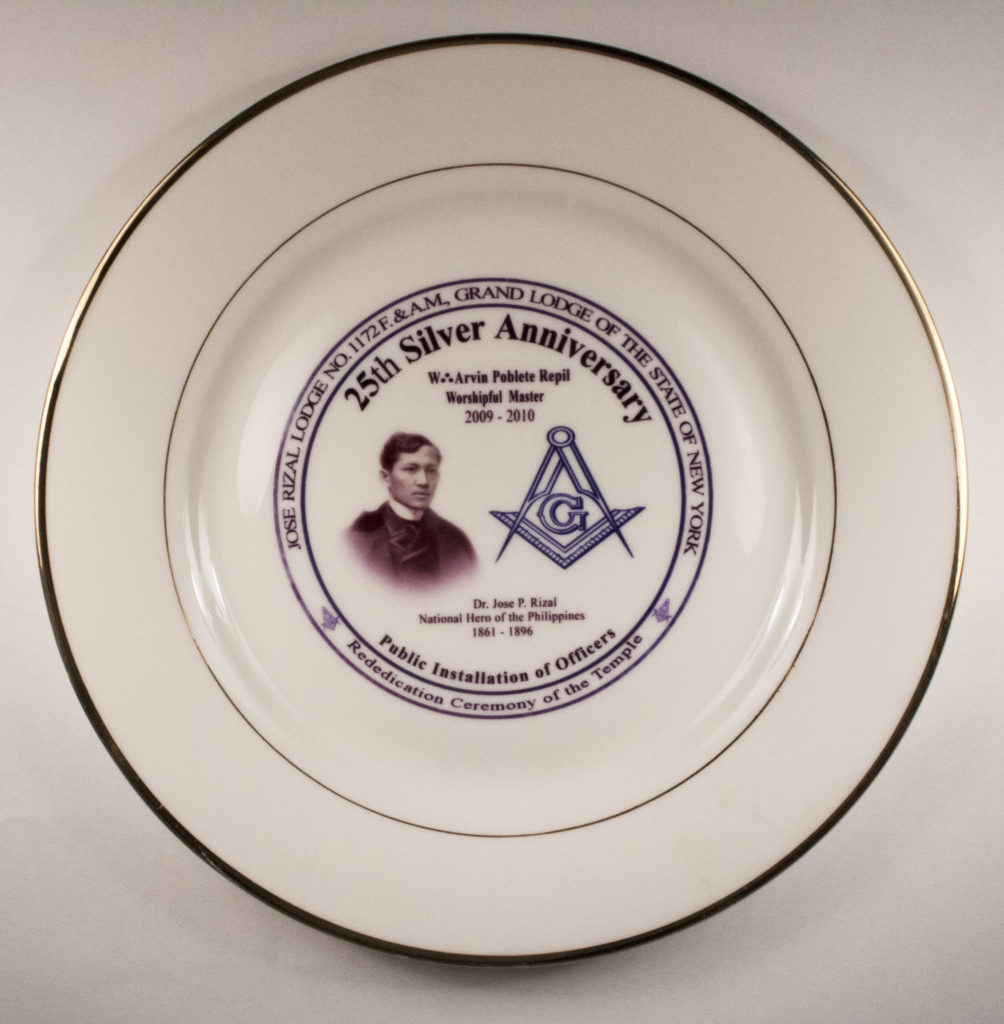
Image by Ratirat Osiri
Also on display, to highlight the Mason after whom Jose Rizal Lodge was named, was the below commemorative folder of currency, issued in the Philippines with a Masonic Square and Compasses prominently displayed. The first-named Hero in the Struggle for independence was Brother Jose Rizal, a member of Logia Solidaridad No. 53.
-
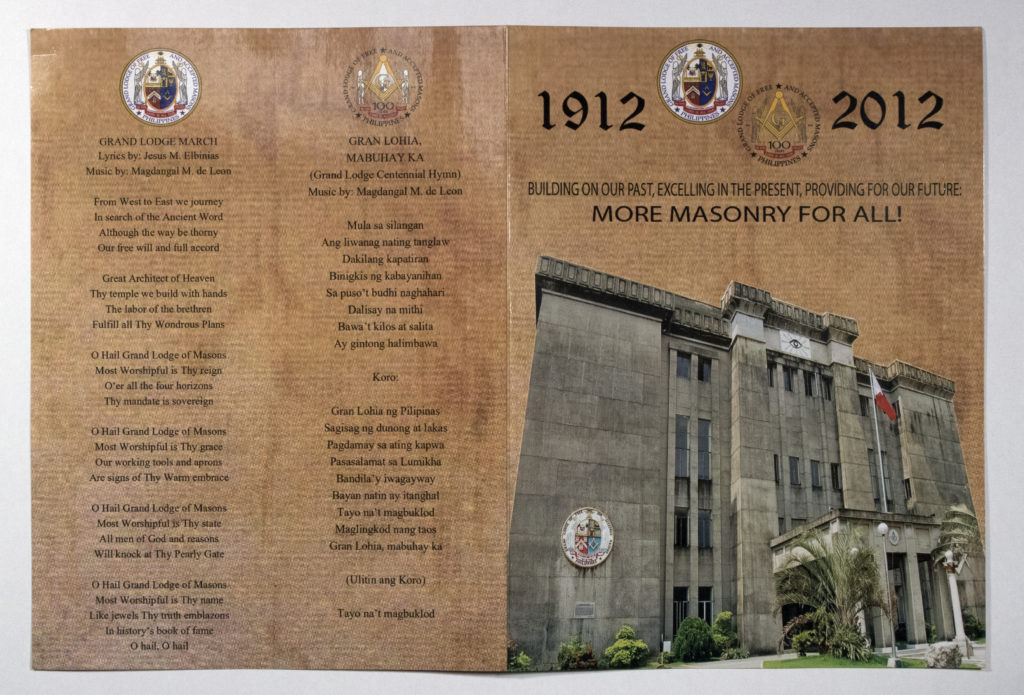
Image by Ratirat Osiri
-
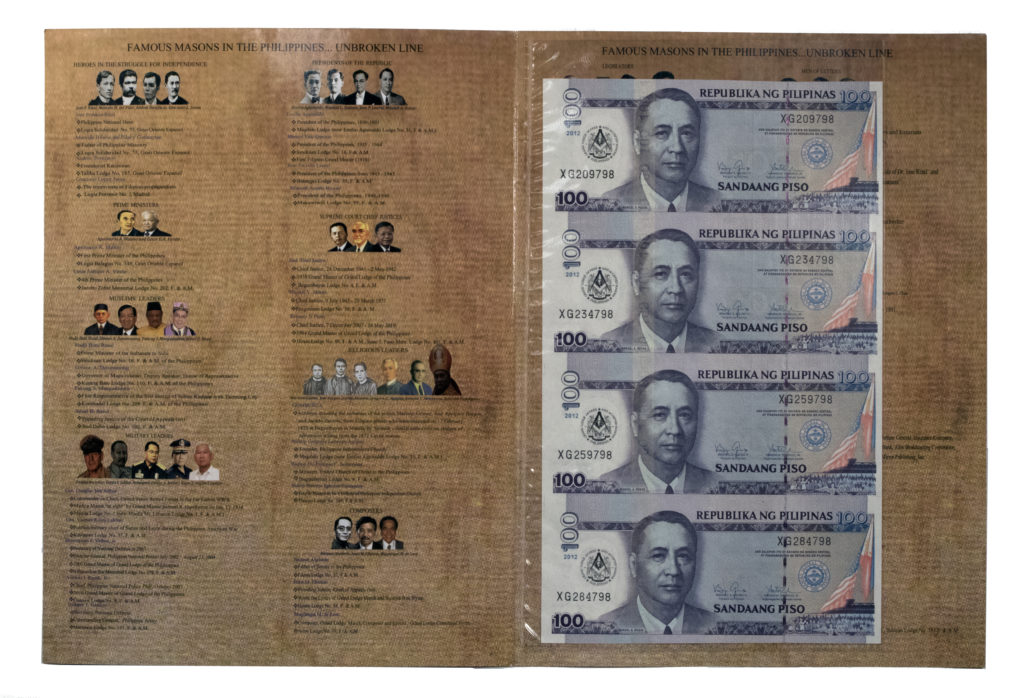
Image by Ratirat Osiri
-
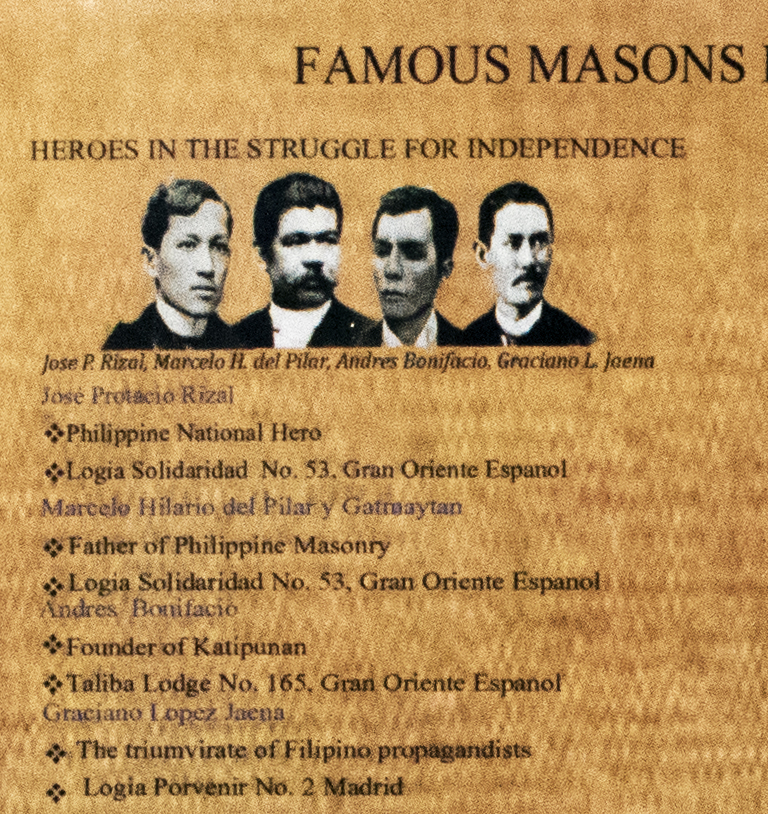
Image by Ratirat Osiri
It was a great pleasure for the Library’s Museum Division to share some of the magnificent artifacts in the Collection with the Brethren for whom the items have most meaning. Please don’t hesitate to contact the Library if your Lodge or District would like to have a similar Special Exhibit.

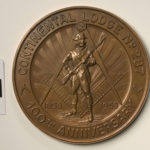
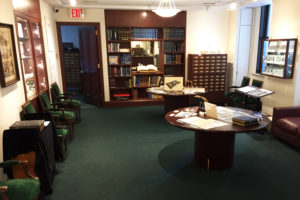
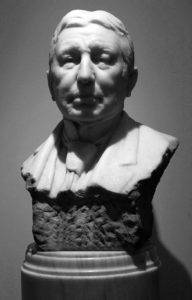
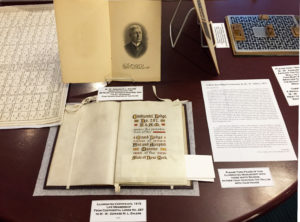
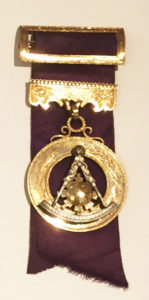
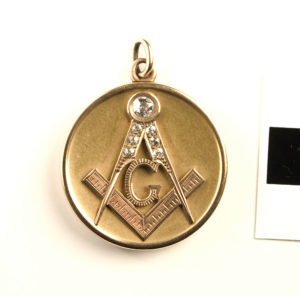
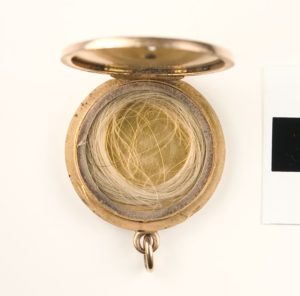
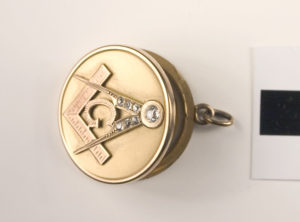
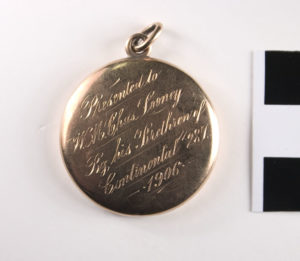

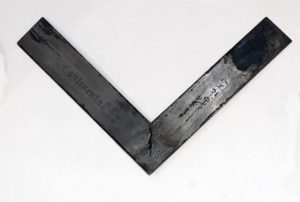
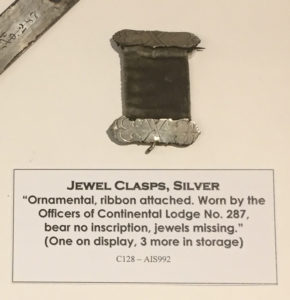
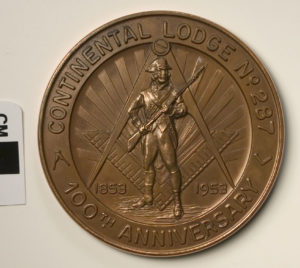
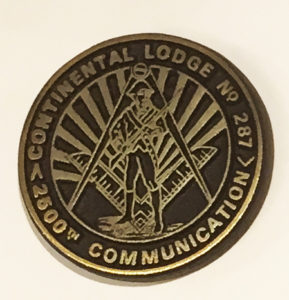 An Architect’s Rendering of a Model Lodge Room, designed in 1934 by Kromm and Kohl for Continental Lodge No. 287, was displayed above the actual Model Lodge Room.
An Architect’s Rendering of a Model Lodge Room, designed in 1934 by Kromm and Kohl for Continental Lodge No. 287, was displayed above the actual Model Lodge Room.